Tired of frequent bulb replacements and high maintenance costs? Traditional floodlights fail too often, creating hassle for your projects. You need a reliable, long-lasting solution that saves time and money.
LED floodlights are more durable because they are solid-state devices without fragile parts like filaments or glass tubes. Their exceptional longevity is primarily achieved through effective heat dissipation, which protects the LED chip from degrading and ensures a long, stable performance life.
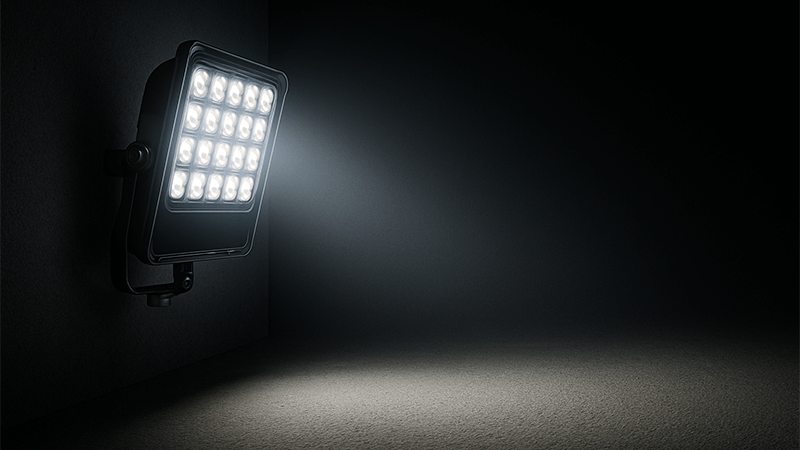
I get this question a lot from experienced purchasing managers. They see the claims of a 50,000-hour lifespan, but they want to understand the "why" behind it. It’s a smart question. Knowing the answer helps you separate a high-quality product from a cheap one that will fail early. Let’s dig into the details. Understanding the core technology is the best way to make sure you are sourcing truly durable a lighting for your projects.
What are the major advantages of using LEDs over traditional lighting technologies?
Deciding between LED and old-school lighting for a big project? The wrong choice can lead to high energy bills and constant maintenance. You need the most efficient and reliable option.
LEDs hold major advantages. They use much less energy, last significantly longer, provide better light quality and control, and are far more durable and environmentally friendly than traditional lighting like halogen or metal halide.
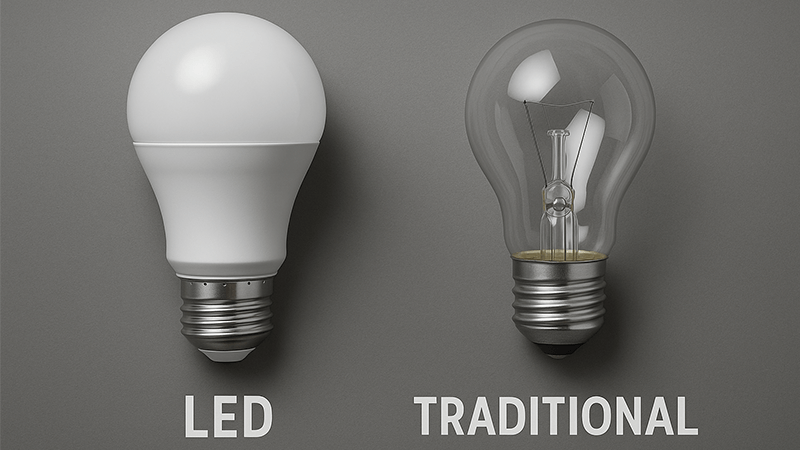
When I first started in this industry, factories were full of metal halide and high-pressure sodium lamps. The light was harsh, they took forever to warm up, and they used a ton of power. Seeing the shift to LED has been incredible. The difference isn’t small; it’s a complete game-changer for anyone sourcing lights for a large project.
Here’s a simple breakdown of how these technologies stack up. I made this table for a client in the UAE, Shaz, to help him explain the benefits to his own customers.
| Feature |
LED (Light Emitting Diode) |
Halogen Lamp |
Metal Halide Lamp |
| Lifespan |
50,000 – 100,000 hours |
1,000 – 2,000 hours |
6,000 – 15,000 hours |
| Energy Efficiency |
Very High (90-150 lm/W) |
Low (15-25 lm/W) |
Moderate (70-100 lm/W) |
| Durability |
Excellent (Solid-state) |
Poor (Fragile filament) |
Moderate (Fragile arc tube) |
| Warm-up Time |
Instant |
Instant |
5-15 minutes |
| Heat Emitted |
Very Low |
Very High |
High |
| Environmental |
No toxic materials |
Contains halogen gases |
Contains mercury |
The durability point is especially important for floodlights. They are often installed in hard-to-reach places. An LED fixture has no moving parts and no fragile filament. It can handle vibration from traffic or machinery without failing. A halogen bulb, on the other hand, can break from a simple shock. This solid-state ruggedness is the first reason LEDs are built to last.
What are the benefits of LED flood lights?
Are your current floodlights just a massive power drain? They get incredibly hot and the light quality is poor. You need effective outdoor lighting that is efficient and versatile.
LED floodlights provide powerful, directed illumination with very low energy consumption. They also enhance security, generate minimal heat, have a very long lifespan, and require almost no maintenance, saving money and labor.
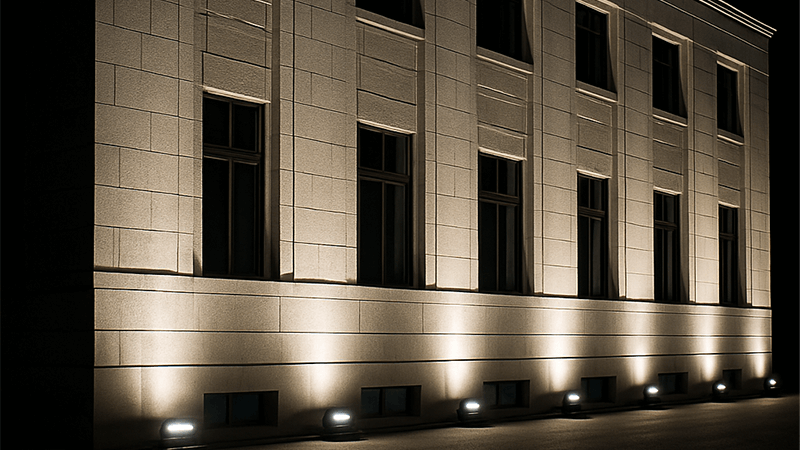
The benefits of LED floodlights go far beyond just a longer life. They change how you can light a space and what you can do with it. As a manufacturer, I work with clients to leverage these benefits to meet their specific project goals, whether it’s for security, architecture, or sports.
Cost Savings Beyond the Energy Bill
Everyone knows LEDs save on electricity. But for a purchasing manager or contractor, the real savings are in maintenance. Think about it. Replacing a traditional bulb in a floodlight mounted on a 10-meter pole requires two workers and a lift. This can cost hundreds of dollars just for one bulb change. With an LED floodlight rated for 50,000 hours, you install it and forget about it for over a decade in many cases. There are no bulbs to stock and no labor costs for replacement. These "soft" costs add up to huge savings over the life of a project.
Better, Smarter Lighting
Traditional floodlights just blast light everywhere. LEDs are different. With precise optics, we can direct the light exactly where it’s needed – on a building facade, a parking lot, or a sports field. This reduces light pollution and a creates a much better visual effect. They are also "instant on" with no warm-up time, which is critical for security lighting connected to motion sensors. You get full brightness the moment it’s needed. This level of control just isn’t possible with older technologies like metal halide.
Design and Application Flexibility
Because LED chips are so small, we can design fixtures that are much smaller, sleeker, and more modern. Old floodlights were big and bulky because they had to manage massive amounts of heat and house large lamps. The compact nature of LEDs gives architects and designers much more freedom. We can create very low-profile fixtures that blend into the architecture, or powerful sports lights that are a fraction of the size and weight of their predecessors. This opens up new possibilities for any outdoor lighting project.
What is the most durable outdoor lighting?
Worried about outdoor lights failing from rain, dust, or a stray rock? A weak fixture becomes a point of failure and a safety liability. You need lighting that can survive the elements.
The most durable outdoor lighting is a well-designed LED fixture with a high IP (Ingress Protection) and IK (Impact Protection) rating. Durability comes from combining the solid-state nature of LEDs with a robust, sealed housing made from quality materials.
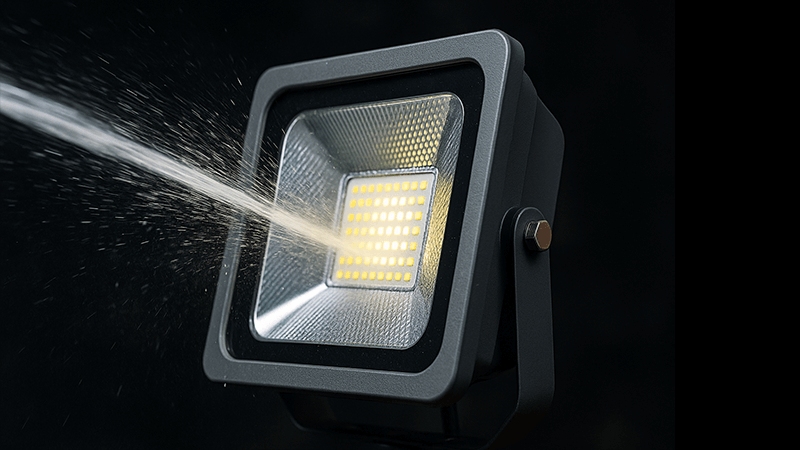
For me, this is where a manufacturer’s quality really shows. You can have the best LED chip in the world, but if the housing fails, the light is useless. I’ve seen cheap fixtures rust out or fill with water in less than a year. When we design a floodlight, we focus heavily on its physical defense against the environment.
The Shield Against Dust and Water: IP Rating
Ingress Protection, or IP rating, tells you how well sealed a fixture is. It has two numbers. The first is for solids (dust), and the second is for liquids (water).
- IP65: Dust-tight and protected from water jets from any direction. Good for many applications.
- IP66: Dust-tight and protected from powerful water jets. This is the standard I recommend for most high-quality floodlights. It ensures it can handle heavy rain and wash-downs.
- IP67: Dust-tight and can be temporarily submerged in water. This is needed for ground lights or areas prone to flooding.
Always check the IP rating. For a project in a coastal area like the UAE, a high IP rating is non-negotiable to keep out salty, humid air.
The Armor Against Impact: IK Rating
The IK rating measures how much impact energy a fixture can withstand. It’s a measure of its toughness. An IK08 rating, for example, means the fixture can withstand an impact of 5 joules, which is like dropping a 1.7 kg mass from about 30 cm. This is important for lights in public areas, sports facilities, or any place where they might get hit. A strong die-cast aluminum body and a thick polycarbonate or tempered glass lens are key to achieving a high IK rating.
Materials and Construction Matter
The best materials for a durable floodlight body are die-cast aluminum alloys like ADC12. They are strong, lightweight, and excellent at dissipating heat. The finish is also critical. A multi-stage powder coating process is essential to prevent corrosion, especially in coastal or industrial environments. Every component, from the stainless steel screws to the silicone gaskets, must be chosen for longevity. This combination of ratings and materials is what creates a truly "install and forget" outdoor light.
Why do LED lights last longer?
You see claims of 50,000-hour lifespans for LEDs, but some fail in a year. How can you be sure you’re buying one that lasts? You need to understand the real factor behind longevity.
LEDs last longer because they don’t have a filament that burns out. Instead, their light output slowly decreases over time. Excellent thermal management, using a heavy-duty heat sink, is the single most important factor in slowing this process and achieving a long, reliable life.
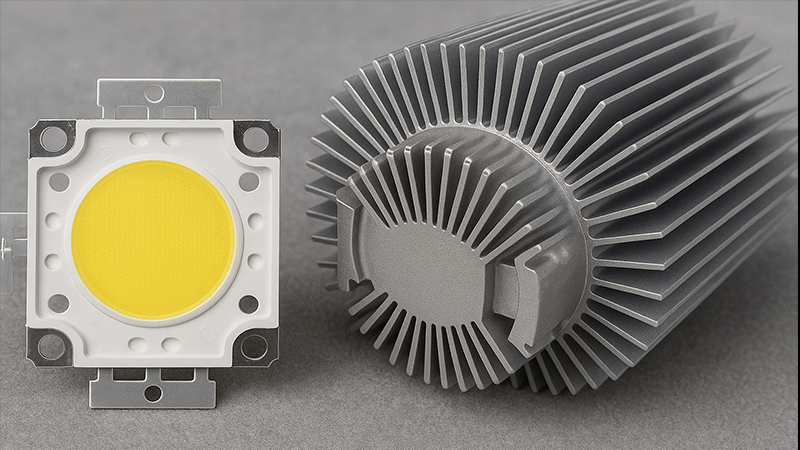
This is the core secret to LED durability, and it’s what separates the best manufacturers from the rest. The theoretical lifespan of an LED is amazing, but making it a reality depends entirely on how well you manage heat. It’s the number one thing I focus on when designing a new light.
A Different Way of Failing
A traditional bulb works by heating a tiny wire (a filament) until it glows. This process is literally a controlled act of self-destruction. Eventually, the filament breaks, and the light is dead. An LED works completely differently. It’s a semiconductor that emits light when current passes through it—a process called electroluminescence. There’s nothing to "burn out." Instead, LEDs experience lumen depreciation, meaning they get gradually dimmer over their lifespan. An L70 rating of 50,000 hours means that after 50,000 hours, the LED will still produce at least 70% of its original light output. It doesn’t just suddenly die.
Heat: The number one enemy of LEDs
While LEDs produce very little infrared heat in their light beam, the electronics inside the chip do generate heat. The temperature right at the semiconductor chip is called the "junction temperature." If this temperature gets too high, the process of lumen depreciation speeds up dramatically. The materials inside the LED begin to break down faster. A hot-running LED might lose 30% of its light in just 10,000 hours, while a cool-running one will take 50,000 hours or more to reach that same point.
The Heat Sink: The Unsung Hero
This is where the physical design of the floodlight is crucial. The heat sink is the component, usually a large piece of finned aluminum, that is responsible for pulling heat away from the LED chip and driver and releasing it into the air. I once inspected a competitor’s failed product. The LED driver they used was good quality. But the heat sink was a thin, small piece of aluminum. It simply couldn’t get rid of the heat fast enough. The light basically cooked itself. This is why when you pick up a well-made LED floodlight, it feels heavy and substantial. That weight is often from a large, properly engineered heat sink, which is your best guarantee of a long and reliable service life.
Conclusion
LED floodlights are inherently durable because of their solid-state design. However, true longevity comes from quality engineering: effective thermal management, a robust IP-rated housing, and high-quality materials.